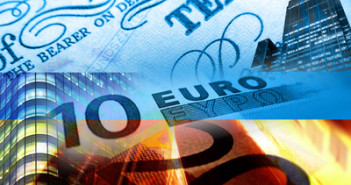EUR/USD has lost ground in Tuesday trading. The pair has dropped below the 1.34 line is trading in the mid-1.33 range in the European session. The euro reacted negatively to German inflation releases on Tuesday, which continue to decline. It’s another quiet day in the US, with no US releases on Tuesday.
Here is a quick update on the technical situation, indicators, and market sentiment that moves euro/dollar.
EUR/USD Technical
- In the Asian session, EUR/USD was steady, dropping below the 1.34 line late in the session. The pair is steady in the European session.
- Current range: 1.3320 to 1.3400.
Further levels in both directions:Â Â 
- Below: 1.3320, 1.3240, 1.3175, 1.31, 1.3050 and 1.3000, 1.2940, 1.2890 and 1.2840.
- Above: 1.3400, 1.3440, 1.3500, 1.3570, 1.3650, 1.3710, 1.3800 and 1.3870
- 1.3320 is the next support level. 1.3240 is stronger.
- On the upside, 1.3400 remains under pressure. 1.3440 is next.
EUR/USD Fundamentals
- 6:00 German Final CPI. Exp. -0.2%, Actual -0.2%.
- 6:00 German WPI. Exp. 0.3%, Actual -1.0%.
*All times are GMT
For more events and lines, see the Euro to dollar forecast.
EUR/USD Sentiment
- German inflation indicators point downwards: Germany released inflation data on Tuesday, and the markets were treated to weak numbers. Final CPI dropped 0.2%, its first decline since April. The index has not looked strong lately, posting two consecutive releases of 0.0%. There was no relief from German Wholesale Price Index, which posted a sharp decline of -1.0%, well off the estimate of 0.3%. It was the index’s worst showing since June 2012. Weak Eurozone inflation was a major factor in the ECB’s rate cut last week, and the Bank will likely have to take further monetary steps if Eurozone and German inflation numbers do not move towards the ECB’s inflation target of 2%.
- Non-Farm Payrolls Soars: The markets had very low expectations from the October NFP, with an estimate of just 121 thousand. However, the indicator jumped to 204 thousand, its highest level in eight months. The sparkling NFP figure gave a boost to the US dollar, and has increased speculation that the Fed might press the tapering trigger in December. Such talk could bolster the US currency, as a reduction in QE is bullish for the dollar.
- ECB surprises with rate cut: The ECB surprised the markets on Thursday when it reduced its benchmark interest rates by 0.25%, to a record low rate of 0.25%. The marginal rate was cut to 0.75% from 1.0%, while the deposit rate was left at unchanged at 0.0%. ECB head Mario Draghi noted that inflation in the Eurozone remains very low and said that this would likely continue in the coming months. He added that further monetary easing was an option until conditions improved. The markets had expected the benchmark rate to remain at 0.50%, but the combination of weak growth and very low inflation led to the ECB making the surprise move.
- Euro takes a dive: The surprise ECB rate cut and superb Non-Farm Payrolls are the latest setbacks for the struggling euro. The currency looked sharp just a couple of weeks ago, when it was trading above the 1.38 line. Since then, the euro has taken a sharp turn downwards, shedding over four cents against the US dollar. With increasing talk of a Dectaper from the Federal Reserve, there is more room for the euro to fall.
- French data disappoints: The French economy continues to disappoint, as Industrial Production declined 0.5%, well off the estimate of a 0.4% gain. This marked the fourth decline for the manufacturing indicator in five releases. The trade surplus widened to -5.8 billion euros in October, a four-month high. This was well off the forecast of -4.7 billion. To add to the bad news, the Standard and Poor’s credit rating agency downgraded France’s sovereign rating from AA+ to AA. However, the outlook has improved from negative to stable, meaning we’re unlikely to see another downgrade to France’s rating for quite some time.



